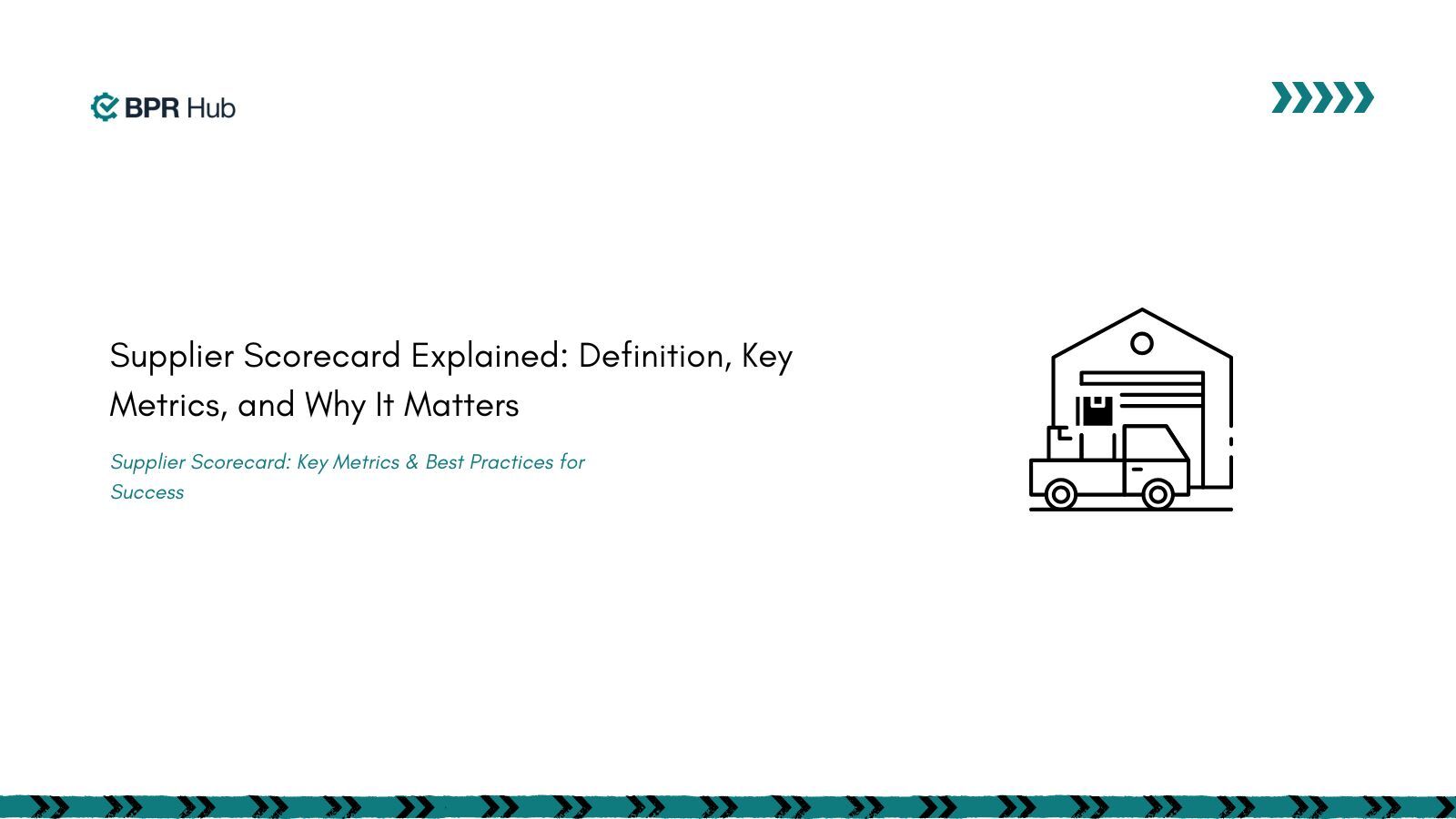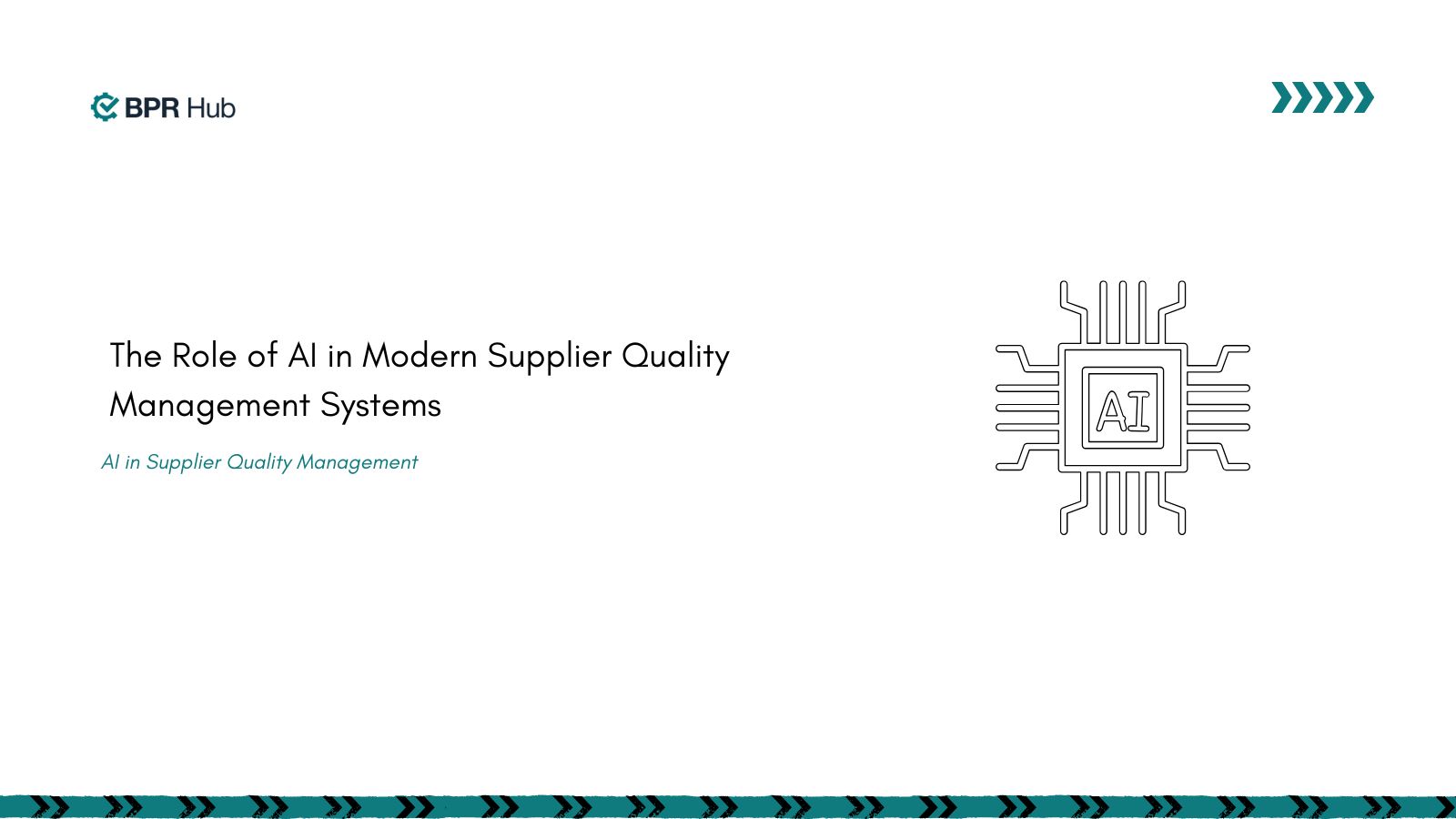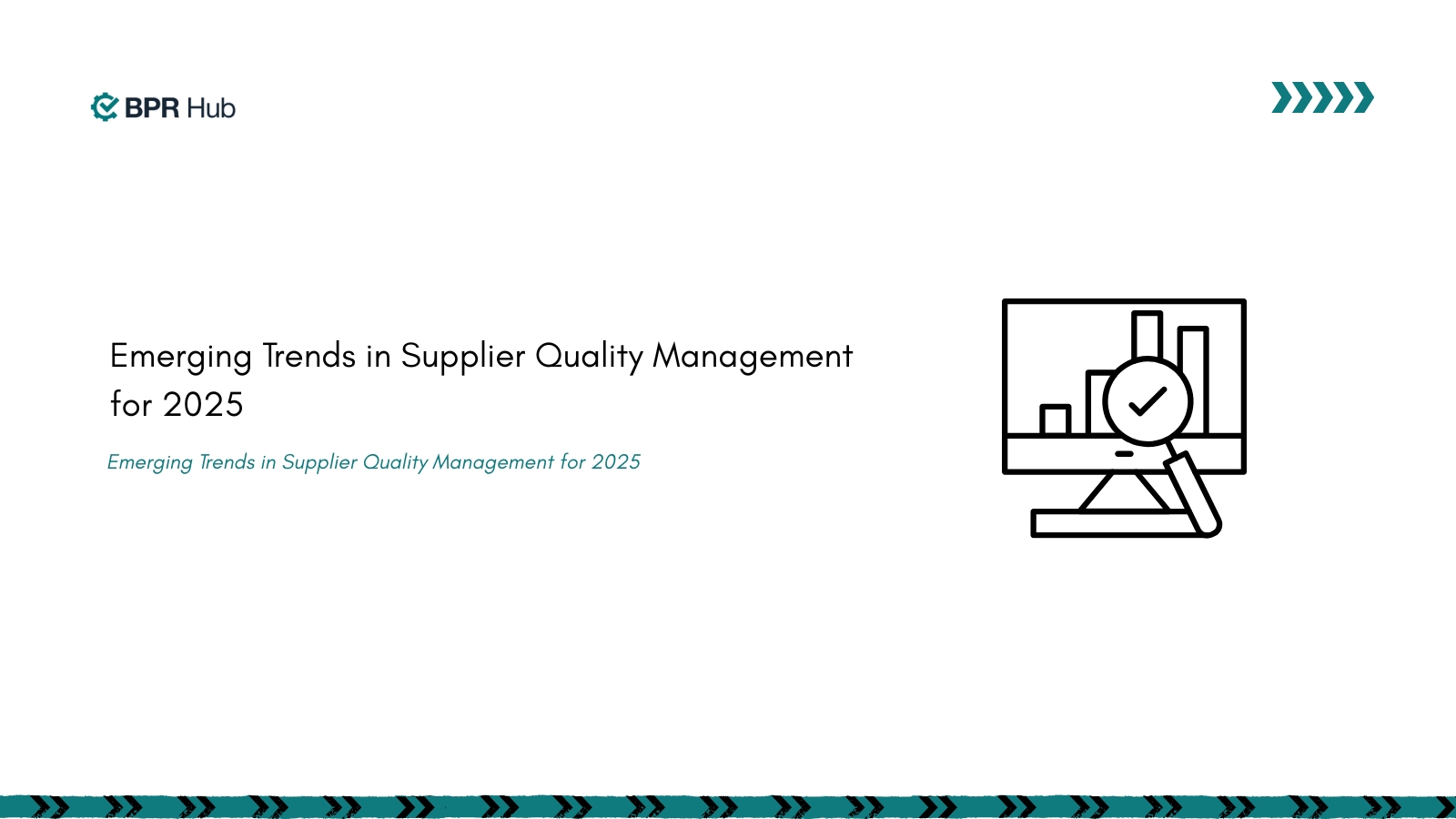Manufacturing operations face countless challenges, but one critical area that can make or break success is supplier performance management. A supplier scorecard serves as your strategic compass, transforming subjective vendor evaluations into data-driven insights that strengthen your supply chain resilience. This comprehensive guide explores how supplier scorecard metrics enable manufacturers to optimize procurement decisions, reduce costs, and build stronger partnerships with vendors who align with their operational excellence goals.
What is a Supplier Scorecard and Why Does It Matter?
A supplier scorecard is a strategic performance management tool that provides procurement and operations teams with a standardized framework to evaluate vendor performance across critical business metrics. Unlike informal assessments based on scattered feedback, supplier scorecards deliver measurable, comparable data that drives informed decision-making.
The core purpose extends beyond simple monitoring. According to McKinsey's procurement research, companies using structured supplier performance management scorecards can achieve significant cost reductions and operational improvements through enhanced vendor accountability. For manufacturers operating under strict regulatory requirements, scorecards ensure vendor compliance while maintaining audit readiness across multiple quality management standards.
Modern vendor scorecard metrics transform procurement from a reactive function into a proactive growth enabler, helping organizations identify high-performing suppliers, negotiate better terms, and eliminate underperforming vendors before they impact operations.
Key Metrics to Track on Your Supplier Scorecard
Effective supplier scorecard metrics provide visibility into vendor performance across four essential dimensions that directly impact manufacturing operations.
Quality Performance measures the consistency and reliability of products or services delivered. Track defect rates, compliance with specifications, and the frequency of corrective action requests to ensure suppliers meet your quality standards. According to Thomasnet industry benchmarks, maintaining defect rates below 2% represents optimal supplier performance. Manufacturing operations require suppliers who deliver materials that meet exact specifications without requiring rework or causing production delays.
Delivery Metrics evaluate timeliness and fulfillment accuracy across all supplier interactions. Monitor on-time delivery rates, order accuracy, and lead time consistency to maintain smooth production schedules. Industry standards suggest suppliers should achieve 95% or higher on-time delivery rates to support lean manufacturing operations effectively.
Cost Competitiveness encompasses pricing stability, invoice accuracy, and total cost of ownership considerations. Effective scorecards track not just unit costs but also hidden expenses like expedited shipping fees, quality issues, and administrative overhead.
Transform Your Supplier Management Today. Schedule a Free Demo with BPR Hub
📍 Book a Demo
📧 hello@bprhub.com
Supplier Performance Metrics Scorecard: How to Measure Success
The most successful supplier performance metrics scorecards balance quantitative measurements with qualitative assessments that capture the full vendor relationship. Vendor scorecard metrics should include both operational performance indicators and strategic partnership elements.
Operational metrics focus on measurable outcomes: defect rates below 2%, on-time delivery above 95%, and cost variances within 3% of agreed pricing. Strategic metrics evaluate communication responsiveness, innovation capability, and collaborative problem-solving during challenging situations.
According to procurement best practices research, industry leaders typically weight quality metrics at 30-40% of total scores, delivery performance at 25-30%, cost factors at 20-25%, and strategic partnership elements at 10-15%. This weighting ensures suppliers excel in core operational areas while contributing to long-term business growth through innovation and collaboration.
Best Practices for Building an Effective Supplier Scorecard
Successful supplier scorecard implementation requires clear objectives aligned with business strategy and measurable KPIs that drive meaningful improvements. Start by reviewing original RFP documents and contracts to identify existing service level agreements that can serve as the scorecard metrics foundation.
Define grading scales that provide actionable feedback rather than simple pass-fail assessments. Many organizations use 5-point scales where scores of 3 represent acceptable performance, 4-5 indicate exceptional value, and 1-2 trigger improvement discussions or vendor replacement considerations.
Establish regular review cycles with suppliers to discuss scorecard results transparently. Quarterly reviews with strategic suppliers and semi-annual assessments for standard vendors maintain engagement without creating an administrative burden.
How to Implement a Supplier Scorecard in Your Business
Implementation success depends on securing stakeholder buy-in and establishing clear processes that integrate with existing procurement workflows. Begin with pilot programs focused on critical suppliers representing the highest spend or risk exposure to demonstrate value before expanding organization-wide.
Technology integration streamlines data collection and analysis while reducing the manual effort required to maintain scorecards. Modern procurement platforms automatically capture delivery performance, quality metrics, and cost data from existing systems, ensuring scorecard accuracy without additional administrative overhead.
Communication protocols must be established with suppliers before the scorecard launch. Share evaluation criteria, weighting methodologies, and improvement expectations to ensure vendors understand how performance will be measured and rewarded.
How Supplier KPIs Drive Collaboration and Continuous Improvement
Strategic supplier KPIs transform vendor relationships from transactional interactions into collaborative partnerships focused on mutual growth. When suppliers understand how their performance contributes to your operational success, they become invested in achieving shared objectives rather than simply fulfilling contractual minimums.
Effective scorecards identify improvement opportunities that benefit both parties. For example, suppliers with inconsistent delivery performance might benefit from demand forecasting collaboration, while quality issues could be addressed through joint process improvement initiatives.
Recognition programs for top-performing suppliers strengthen relationships and encourage continued excellence. Leading manufacturers offer preferred supplier status, increased business allocation, and collaborative innovation opportunities to vendors consistently achieving scorecard excellence.

The Benefits of Using a Supplier Performance Management Scorecard
Structured supplier performance management scorecards deliver quantifiable business benefits across cost reduction, risk mitigation, and operational efficiency. According to McKinsey procurement research, organizations can achieve cost savings of 8-15% through strategic supplier management programs within the first year of implementation through improved vendor accountability and performance-based negotiations.
Risk reduction represents another significant advantage. Scorecards provide early warning indicators of supplier performance degradation, enabling proactive intervention before issues impact production schedules or customer satisfaction. This visibility is particularly valuable for manufacturers operating just-in-time production systems, where supplier reliability directly affects operational continuity.
Enhanced decision-making capabilities emerge through consistent, comparable supplier data. Procurement teams can confidently allocate spending to high-performing vendors, negotiate favorable terms based on demonstrated value, and eliminate underperforming suppliers with documented justification.
Advanced Supplier Scorecard Strategies for Procurement Optimization
Industry-specific supplier scorecards address unique requirements across different manufacturing sectors while maintaining core performance measurement principles. Pharmaceutical manufacturers emphasize regulatory compliance and traceability metrics, while automotive suppliers focus on just-in-time delivery precision and quality consistency.
Automation capabilities enhance scorecard effectiveness through real-time data integration and predictive analytics. Advanced systems identify performance trends before they become problems, suggest corrective actions, and automatically adjust supplier risk profiles based on historical performance patterns.
Integration with enterprise resource planning (ERP) systems ensures scorecard data reflects actual operational performance rather than reported metrics. This connectivity provides authentic insights into supplier impact on production efficiency, inventory optimization, and customer satisfaction levels.
How to Customize Supplier Scorecards for Your Business
Customization begins with understanding your organization's unique operational priorities and risk tolerance levels. Manufacturing companies with high-volume, standardized production might emphasize cost and delivery metrics, while specialized manufacturers prioritize quality and technical capability assessments.
Supplier scorecard metrics should reflect the criticality of different vendor relationships to your business success. Strategic suppliers providing unique or difficult-to-replace components warrant comprehensive evaluation across all performance dimensions, while commodity suppliers might be assessed primarily on cost and delivery performance.
Manual versus automated approaches depend on supplier volume, data availability, and internal resource capacity. Organizations managing fewer than 50 suppliers often succeed with spreadsheet-based systems, while larger operations require integrated software solutions to maintain scorecard accuracy and efficiency.
Common Challenges and How to Overcome Them When Using Supplier Scorecards
Data accuracy represents the most frequent challenge in supplier scorecard implementation. Inconsistent measurement methodologies, incomplete data collection, and subjective scoring criteria undermine scorecard credibility and supplier acceptance.
Establish standardized data collection procedures with clear definitions for each metric to ensure consistency across evaluators and time periods. Regular audits of scorecard data accuracy help identify and correct systematic errors before they compromise decision-making quality.
Supplier resistance often emerges when vendors perceive scorecards as punitive rather than developmental tools. Frame scorecard discussions around partnership improvement and mutual benefit rather than performance criticism. Share best practices from top-performing suppliers and provide resources to help underperforming vendors improve their capabilities.
How BPR Hub Helps with Supplier Scorecard Implementation
BPR Hub's Unified Compliance Framework transforms supplier scorecard management by integrating vendor performance tracking with comprehensive compliance monitoring across 30+ manufacturing standards. The platform ensures supplier evaluations align with ISO 9001 quality management requirements while maintaining audit readiness for regulatory inspections.
Manufacturing operations benefit from BPR Hub's centralized approach to supplier documentation, performance tracking, and compliance verification. The system automatically captures supplier performance data from existing workflows, eliminating manual scorecard maintenance while providing real-time visibility into vendor relationships that impact operational excellence.
BPR Hub's expertise in manufacturing compliance standards ensures your supplier performance management scorecard program supports broader quality management objectives. The platform helps organizations achieve sustainable competitive advantages through strategic vendor partnerships that drive growth rather than simply managing procurement transactions.
Empower your procurement team with real-time visibility and measurable insights. Get Started with BPR Hub’s Supplier Scorecard Solution.
📍 Book a Demo
📧 hello@bprhub.com
Key Takeaways
→ Supplier scorecards transform subjective vendor evaluation into data-driven performance management that reduces costs and operational risks
→ Effective supplier scorecard metrics balance quality, delivery, cost, and strategic partnership elements to drive comprehensive vendor accountability
→ Implementation success requires stakeholder alignment, clear communication with suppliers, and integration with existing procurement workflows
→ Vendor scorecard metrics enable proactive supplier relationship management rather than reactive problem-solving during contract renewals
→ Manufacturing organizations can achieve 8-15% cost savings through structured supplier performance programs that emphasize continuous improvement partnerships
→ BPR Hub's integrated compliance platform ensures supplier scorecards support broader quality management and regulatory compliance objectives
Frequently Asked Questions
What is the difference between a supplier scorecard and a vendor scorecard?
Supplier scorecards and vendor scorecards are essentially the same tool with different terminology preferences. Both evaluate vendor performance using standardized metrics across quality, delivery, cost, and compliance dimensions. The terms are often used interchangeably, with "supplier scorecard" more common in manufacturing contexts and "vendor scorecard" preferred in service-oriented industries. Organizations implementing quality management systems typically use these tools to maintain vendor oversight.
How often should supplier scorecards be updated and reviewed?
Supplier performance management scorecards should be updated monthly with performance data and reviewed quarterly with strategic suppliers. Standard suppliers typically require semi-annual formal reviews, while critical suppliers may need monthly performance discussions. Automated systems enable real-time scorecard updates without additional administrative burden, ensuring timely identification of performance trends that align with operational control requirements.
What are the most important metrics to include in a supplier scorecard?
Essential supplier scorecard metrics include on-time delivery rate (target 95%+), defect rate (below 2%), order accuracy (98%+), cost competitiveness against market benchmarks, and communication responsiveness. Quality-focused manufacturers should emphasize defect rates and compliance metrics, while high-volume operations prioritize delivery consistency and cost performance. These metrics support inspection and testing procedures essential for quality assurance.
How can small manufacturers implement supplier scorecards with limited resources?
Small manufacturers can start with simplified supplier scorecards focusing on 3-5 critical metrics using spreadsheet templates. Begin with the top spending suppliers or those affecting production schedules most directly. Gradually expand scorecard scope as processes mature and benefits become evident. Many successful programs start with quarterly manual assessments before investing in automated solutions, similar to management review processes that scale with organizational growth.
What should you do when suppliers consistently underperform on scorecards?
Address underperforming suppliers through structured improvement discussions focusing on root cause analysis and collaborative solutions. Provide clear performance expectations, improvement timelines, and support resources when possible. Document all improvement efforts for potential supplier replacement decisions. Consider performance improvement plans with 90-day assessment periods before making vendor changes that could disrupt operations, following similar approaches used in compliance evaluation procedures.
Get insights that help you minimize risks and maximize profits.
Dive deeper into manufacturing compliance with our free resources.
We get it, compliance can get tough.
Here are some additional resources to help.
We get it, compliance can get tough. Here are some additional resources to help.
Get updates in your inbox

.svg)
%20(1).svg)


.jpg)


%20(1).svg)

.avif)

